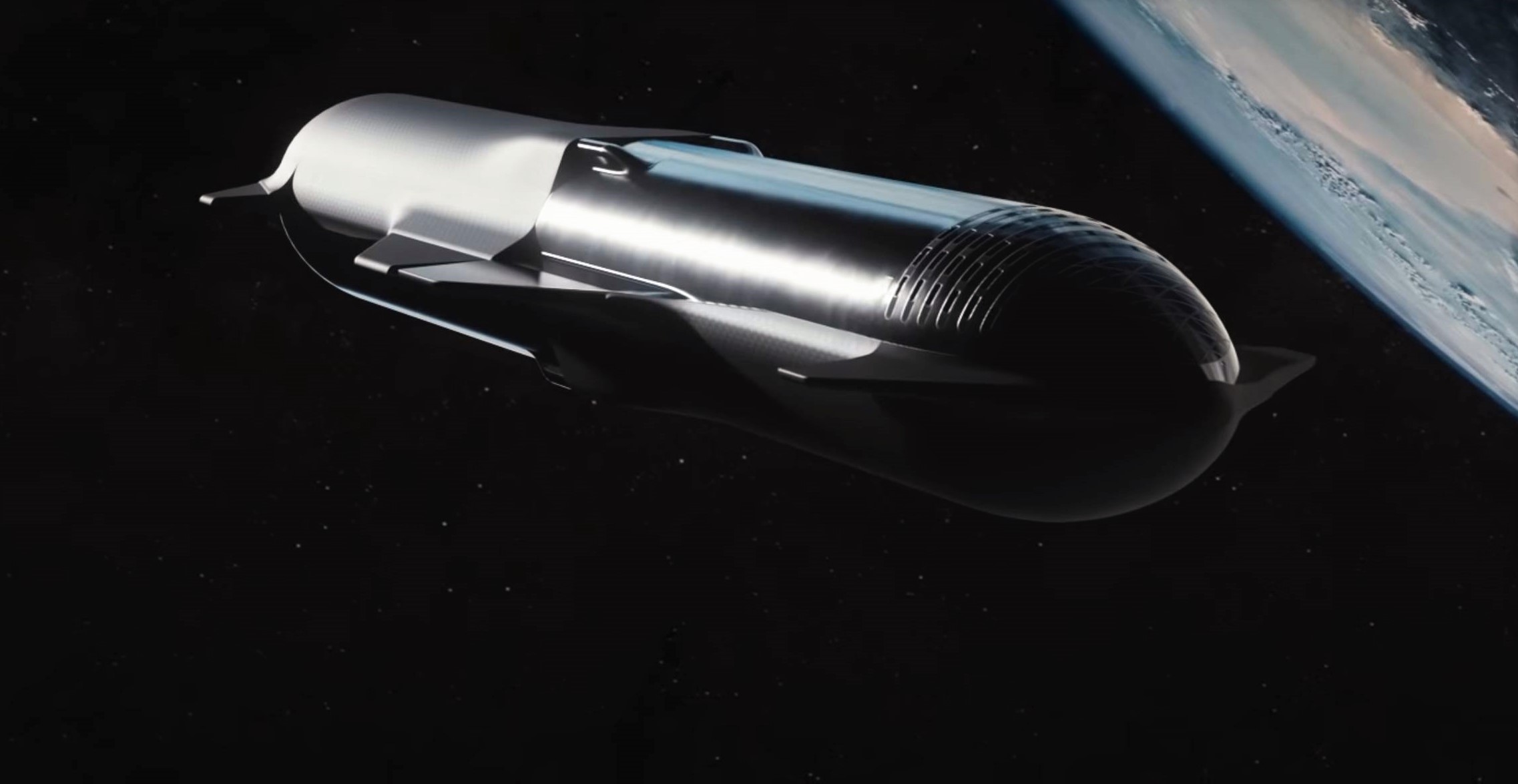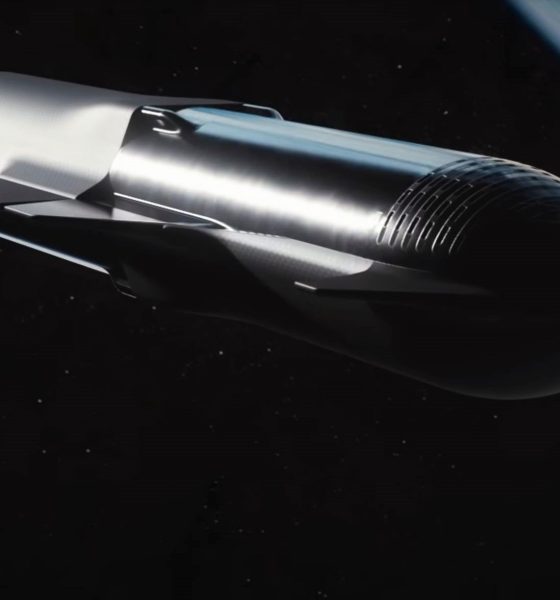

News
SpaceX begins work on Starship orbital propellant transfer test for NASA
More than six months after SpaceX won a NASA ‘Tipping Point’ award to demonstrate a large-scale cryogenic propellant transfer in orbit with Starship, the agency has begun disbursing funds, officially kicking off work on the mission.
Back in October 2020, NASA awarded 15 different companies more than $370 million for research and development projects related to managing cryogenic propellant in space, lunar surface operations, and autonomous landing technology. More than two-thirds of that funding went to four real in-space demonstrations of cryogenic propellant management and storage from Lockheed Martin, United Launch Alliance (ULA), SpaceX, and little-known startup Eta Space.
All four missions are fascinating in their own rights. Leaning heavily on Rocket Lab’s small Electron rocket and Photon spacecraft/kickstage, Eta Space will launch a tiny “cryogenic oxygen fluid management system” and demonstrate its performance for some nine months in orbit. Lockheed Martin will perform a similar but slightly larger test with cryogenic liquid hydrogen – far colder and much harder to handle – in low Earth orbit (LEO). Despite major investments in launch startup and competitor ABL Space, Lockheed Martin selected rocket-3D-printing startup Relativity to launch the mission – possibly because the company says it will be able to print a custom fairing to accommodate the payload’s unusual dimensions.

While vague, ULA appears to have plans to test the claimed long-duration coast capabilities of the Vulcan rocket’s Centaur V upper stage, though it’s unclear if that testing will be performed on the ground or in space. Finally, NASA awarded SpaceX $53 million for a “large-scale flight demonstration to transfer 10 metric tons of…liquid oxygen…between tanks on a Starship.”
In the context of NASA’s shocking April 2021 decision to competitively award SpaceX – and SpaceX alone – a $2.9 billion contract to return humanity to the Moon with Starship, the agency’s $53M investment in a demonstration of a capability Starship cannot reach the Moon without seems like a no-brainer. On its own, SpaceX’s next-generation fully-reusable Starship launch vehicle is expected to be able to deliver payloads of 100 to 150 metric tons (220,000-330,000 lb) to LEO. However, to make Starship fully reusable, the ship itself – also serving as the upper stage – is extremely heavy, drastically undercutting its performance to higher orbits.
To high Earth orbits, a lone Starship offers performance akin to SpaceX’s own Falcon Heavy. For Starship to be a truly revolutionary rocket, SpaceX will have to master rapid reusability and orbital refueling. Even with moderate refueling, Starship’s potential performance immediately leapfrogs all other existing and planned rockets. With full refueling in LEO, Starship quickly becomes capable of delivering dozens to 100+ tons of cargo and passengers to the surface of Mars. With refueling in high Earth orbit, Starship could land hundreds of tons on Earth’s Moon and likely launch cargo and spacecraft anywhere in the solar system in short order.
Ultimately, US Federal Procurement Database entries show that NASA ultimately procured $50.4 million for SpaceX’s propellant transfer demonstration, began disbursing funds ($15.1M) on May 4th, 2021, and expects SpaceX to complete work by the end of 2022. It’s unclear if NASA expects SpaceX to recover the Starship involved in the test.
If the rest of NASA’s funding is contingent upon successfully returning Starship for hands-on inspections and maximum data recovery, 2022 is a more reasonable target. If NASA deems data returned from orbit satisfactory, on the heels of SpaceX filing for an orbital Starship launch debut as early as next month, that demonstration mission could easily happen this year given that SpaceX only needs to launch one Starship to complete it.

Elon Musk
Elon Musk’s X will start using a Tesla-like software update strategy
The initiative seems designed to accelerate updates to the social media platform, while maintaining maximum transparency.

Elon Musk’s social media platform X will adopt a Tesla-esque approach to software updates for its algorithm.
The initiative seems designed to accelerate updates to the social media platform, while maintaining maximum transparency.
X’s updates to its updates
As per Musk in a post on X, the social media company will be making a new algorithm to determine what organic and advertising posts are recommended to users. These updates would then be repeated every four weeks.
“We will make the new 𝕏 algorithm, including all code used to determine what organic and advertising posts are recommended to users, open source in 7 days. This will be repeated every 4 weeks, with comprehensive developer notes, to help you understand what changed,” Musk wrote in his post.
The initiative somewhat mirrors Tesla’s over-the-air update model, where vehicle software is regularly refined and pushed to users with detailed release notes. This should allow users to better understand the details of X’s every update and foster a healthy feedback loop for the social media platform.
xAI and X
X, formerly Twitter, has been acquired by Elon Musk’s artificial intelligence startup, xAI last year. Since then, xAI has seen a rapid rise in valuation. Following the company’s the company’s upsized $20 billion Series E funding round, estimates now suggest that xAI is worth tens about $230 to $235 billion. That’s several times larger than Tesla when Elon Musk received his controversial 2018 CEO Performance Award.
As per xAI, the Series E funding round attracted a diverse group of investors, including Valor Equity Partners, Stepstone Group, Fidelity Management & Research Company, Qatar Investment Authority, MGX, and Baron Capital Group, among others. Strategic partners NVIDIA and Cisco Investments also continued support for building the world’s largest GPU clusters.
News
Tesla FSD Supervised wins MotorTrend’s Best Driver Assistance Award
The decision marks a notable reversal for the publication from prior years, with judges citing major real-world improvements that pushed Tesla’s latest FSD software ahead of every competing ADAS system.

Tesla’s Full Self-Driving (Supervised) system has been named the best driver-assistance technology on the market, earning top honors at the 2026 MotorTrend Best Tech Awards.
The decision marks a notable reversal for the publication from prior years, with judges citing major real-world improvements that pushed Tesla’s latest FSD software ahead of every competing ADAS system. And it wasn’t even close.
MotorTrend reverses course
MotorTrend awarded Tesla FSD (Supervised) its 2026 Best Tech Driver Assistance title after extensive testing of the latest v14 software. The publication acknowledged that it had previously criticized earlier versions of FSD for erratic behavior and near-miss incidents, ultimately favoring rivals such as GM’s Super Cruise in earlier evaluations.
According to MotorTrend, the newest iteration of FSD resolved many of those shortcomings. Testers said v14 showed far smoother behavior in complex urban scenarios, including unprotected left turns, traffic circles, emergency vehicles, and dense city streets. While the system still requires constant driver supervision, judges concluded that no other advanced driver-assistance system currently matches its breadth of capability.
Unlike rival systems that rely on combinations of cameras, radar, lidar, and mapped highways, Tesla’s FSD operates using a camera-only approach and is capable of driving on city streets, rural roads, and freeways. MotorTrend stated that pure utility, the ability to handle nearly all road types, ultimately separated FSD from competitors like Ford BlueCruise, GM Super Cruise, and BMW’s Highway Assistant.
High cost and high capability
MotorTrend also addressed FSD’s pricing, which remains significantly higher than rival systems. Tesla currently charges $8,000 for a one-time purchase or $99 per month for a subscription, compared with far lower upfront and subscription costs from other automakers. The publication noted that the premium is justified given FSD’s unmatched scope and continuous software evolution.
Safety remained a central focus of the evaluation. While testers reported collision-free operation over thousands of miles, they noted ongoing concerns around FSD’s configurable driving modes, including options that allow aggressive driving and speeds beyond posted limits. MotorTrend emphasized that, like all Level 2 systems, FSD still depends on a fully attentive human driver at all times.
Despite those caveats, the publication concluded that Tesla’s rapid software progress fundamentally reshaped the competitive landscape. For drivers seeking the most capable hands-on driver-assistance system available today, MotorTrend concluded Tesla FSD (Supervised) now stands alone at the top.
News
Elon Musk’s Grokipedia surges to 5.6M articles, almost 79% of English Wikipedia
The explosive growth marks a major milestone for the AI-powered online encyclopedia, which was launched by Elon Musk’s xAI just months ago.

Elon Musk’s Grokipedia has grown to an impressive 5,615,201 articles as of today, closing in on 79% of the English Wikipedia’s current total of 7,119,376 articles.
The explosive growth marks a major milestone for the AI-powered online encyclopedia, which was launched by Elon Musk’s xAI just months ago. Needless to say, it would only be a matter of time before Grokipedia exceeds English Wikipedia in sheer volume.
Grokipedia’s rapid growth
xAI’s vision for Grokipedia emphasizes neutrality, while Grok’s reasoning capabilities allow for fast drafting and fact-checking. When Elon Musk announced the initiative in late September 2025, he noted that Grokipedia would be an improvement to Wikipedia because it would be designed to avoid bias.
At the time, Musk noted that Grokipedia “is a necessary step towards the xAI goal of understanding the Universe.”
Grokipedia was launched in late October, and while xAI was careful to list it only as Version 0.1 at the time, the online encyclopedia immediately earned praise. Wikipedia co-founder Larry Sanger highlighted the project’s innovative approach, noting how it leverages AI to fill knowledge gaps and enable rapid updates. Netizens also observed how Grokipedia tends to present articles in a more objective manner compared to Wikipedia, which is edited by humans.
Elon Musk’s ambitious plans
With 5,615,201 total articles, Grokipedia has now grown to almost 79% of English Wikipedia’s article base. This is incredibly quick, though Grokipedia remains text-only for now. xAI, for its part, has now updated the online encyclopedia’s iteration to v0.2.
Elon Musk has shared bold ideas for Grokipedia, including sending a record of the entire knowledge base to space as part of xAI’s mission to preserve and expand human understanding. At some point, Musk stated that Grokipedia will be renamed to Encyclopedia Galactica, and it will be sent to the cosmos.
“When Grokipedia is good enough (long way to go), we will change the name to Encyclopedia Galactica. It will be an open source distillation of all knowledge, including audio, images and video. Join xAI to help build the sci-fi version of the Library of Alexandria!” Musk wrote, adding in a later post that “Copies will be etched in stone and sent to the Moon, Mars and beyond. This time, it will not be lost.”








